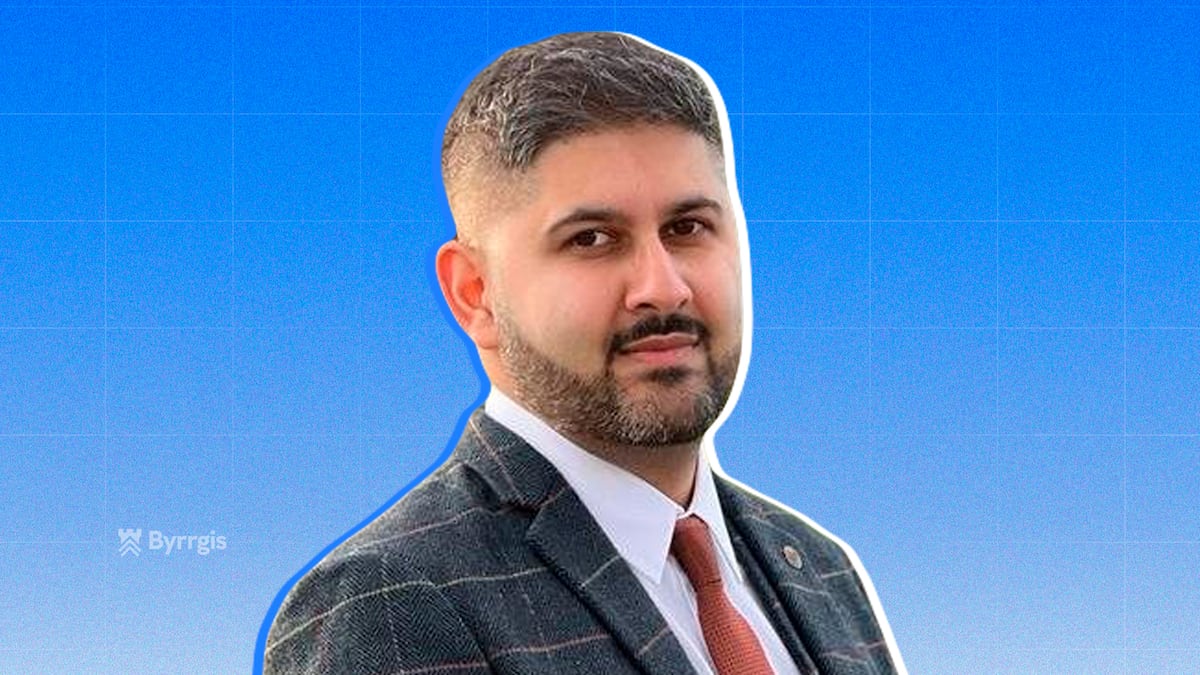Siraaj Ahmed has a background in fintech startups, where he contributed to product development, team building, and early-stage growth initiatives. His experience has developed a strong understanding of operational resilience, agile problem-solving, and the creation of trusted, user-centric solutions. He applies these principles to Byrrgis, ensuring the platform is built with transparency, long-term strategic focus, and the operational discipline necessary to drive sustainable growth. Byrrgis is a multi-chain, risk-vetted trading hub designed to bridge the gap between institutional-grade security and decentralized market access. By offering curated “Packs” of tokens and advanced portfolio management tools, the platform aims to protect users from scams while enabling them to explore the Web3 ecosystem.
We recently spoke with Siraaj Ahmed, Founder and CEO of Byrrgis, about the systemic lack of trust in Web3 trading and how his platform is building a safer, more transparent environment for investors.
Read more about Byrrgis’s strategy to secure user assets and their vision for the future of decentralized trading in the interview below.
What specific gaps in trust, transparency, and investor protection led the team to conclude that a multi-chain, risk-vetted trading hub like Byrrgis was needed?
The founding of Byrrgis was driven by our realization of just how broken the system is. Web3 offers significant potential for traders at all levels, yet it also presents issues that rarely disrupt the TradFi system. We saw that, for all traders, especially those without the experience to evaluate token risk, there is a large gap between normal market risk and the danger posed by scam tokens.
This risk surpasses rug pulls and sketchy tokenomics; it undermines trust and transparency across the entire Web3 ecosystem. We want people to enjoy the benefits of Web3 trading and the freedom it offers, but the danger of scams or unbalanced portfolios threatens this goal. We built Byrrgis to address these issues and eliminate them from our community.
How do dynamic curated Packs, which can be adjusted and reconfigured after purchase, change the way users approach diversification and portfolio management?
With our Packs, we’ve dedicated significant effort to empowering every user on their trading journey while also offering plenty of options to customize and manage their investments. The Packs provide a reliable foundation, featuring pre-vetted tokens in a balanced mix that delivers a consistent risk/return profile.
While every investment has some uncertainty, Packs minimize that as much as possible for those seeking an easy way to invest in Web3. Additionally, for advanced users and those looking to develop their own skills, we provide many ways to customize their portfolios.
What led to the decision to introduce a group-based portfolio logic that allows multiple strategies, such as DCA, profit-taking, and conservative stops, to run simultaneously within a single ecosystem?
The main reason we use group-based portfolio logic is to stabilize the expected risk and return for each type of portfolio our users create. When building a portfolio, users want to diversify their efforts and explore different options. Whether it’s DCA, profit-taking, or other strategies that may favor aggressive or conservative positions, we want to provide a full range of choices.
How does the $WOLF token model, with buybacks, liquidity reinforcement, and its required allocation in every Pack, create long-term value alignment for both traders and the broader ecosystem?
I believe you answered most of the questions! The $WOLF token serves as both the fuel for our ecosystem and a stabilizing force. We avoid prioritizing heavy profits for the team or adopting inflation strategies that could weaken the token over time. Instead, we have established clear, transparent policies that do two things: they effectively strengthen $WOLF over time, maintaining its stability and increasing its value, and they send a strong message that Byrrgis was built for the community.
What strategic considerations led to the decision to lock more than half of the $WOLF supply for two years, and how is this expected to influence the ecosystem’s long-term trust profile?
To our team, this was an obvious decision. First, locking that much of the value protects the token and platform, ensuring they remain strong during this growth period and preventing any destabilizing actions. Second, it sends a more powerful message than any advertising or press could hope for: we are here for the long term, and our actions prove it.
How does Byrrgis balance institutional-grade custody and security with the expectations of users who still want meaningful control and access across decentralized markets?
This balance required significant effort, and we are proud of our ability to offer institutional-grade custody that safeguards our customers’ assets. This provides us with the tools to fully protect these investments and uphold our community’s trust. At the same time, we understand that customers want as much control as possible, which is partly why our product offerings are as customizable as they can be.
Beyond curated Packs, our users can customize their investment portfolios that span across chains while being protected by Byrrgis. We have consistently received praise for achieving this balance. Our community trusts us to safeguard their assets and appreciates the freedom to explore different areas of the Web3 ecosystem.
What have been the main technical or security challenges in building a cross-chain routing system that spans hundreds of liquidity venues while maintaining strict execution standards?
Honestly, the biggest challenge is that there’s no shortcut to ensuring strong security in a trading system. The broader your ecosystem’s reach, the more effort you need to invest to provide stable protection for the community. We’ve built a highly robust cross-chain routing system that took countless hours of diligent work by a talented team of security experts and professional developers. We vetted every liquidity venue and connection, and continuously stress-tested the system to ensure it offers the best possible protection.
Which trader behaviors or research pain points most directly shaped the design of the command center as a unified workflow for risk scores, liquidity checks, contract analysis, and pack management?
It all comes down to providing key information that answers the questions traders are asking as they manage their portfolios. Whether you call it “actionable intelligence” or “minimizing time to correct action,” the outcome remains the same. We drew on our own experiences and those of our traders to understand how they use risk scores, liquidity checks, uncertainty estimates, and overall portfolio expectations to build our command center. But at its core, our strategy focuses on answering the key questions traders will ask before they even ask them.
What’s next on the roadmap, and where do you see Byrrgis heading over the next few years?
In a word? Growth. Byrrgis has dedicated much of its early development to building a solid foundation. We achieved this by securing our supply, carefully building hundreds of connections across Web3, and designing our Packs to be easy for new traders yet customizable for professionals.
Our roadmap will build on what we’ve created by engaging with our community, understanding how they use our tools, and identifying where they need more support. We focus on scaling smoothly as our community rapidly grows and developing features our users will find valuable. In addition to these core efforts, we will continue pursuing licensing opportunities worldwide and exploring the use of AI to enhance our community’s experience.


